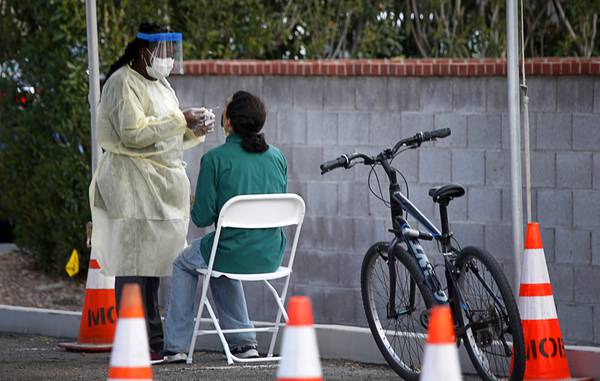CARSON CITY — Nevada health officials announced Monday they intend to release a response plan geared toward containing the coronavirus among demographic groups that have fueled a recent uptick in new cases reported daily: individuals ages 20-49 and Latinos.
As of Sunday, Nevada has reported a total of 17,894 confirmed coronavirus cases and 504 deaths. More than half of the state’s confirmed cases have been in individuals ages 20-49 and 42% of those who have tested positive have been Latino — mirroring nationwide trends.
Over the course of last week, Nevada's total cases increased an average of 623 cases, or 4.1%, per day. By comparison, the state's total cases during the week of May 31 increased an average of 116 cases, or 1.4%, per daily, Nevada COVID-19 Response Director Caleb Cage said in a telephone call with reporters Monday.
The number of infections is thought to be far higher because many people have not been tested, and studies suggest people can be infected with the virus without feeling sick.
The recent uptick in positive tests has come as the number of Nevada residents tested weekly has decreased. Nevada laboratories processed 34,301 tests the week ending June 28, down from 38,358 and 40,121 during the weeks ending June 21 and June 14, respectively.
Despite the momentary decrease in testing, Cage said Nevada will end the month of June having tested drastically more individuals than in the initial months of the pandemic. State health officials have also refined their protocols to make sure they're reaching out to individuals who need to be tested due to possible exposure, based on the state's expanded contact tracing and case investigation efforts, Cage said.
“From a testing standpoint, if you just look at the public labs, they were equipped and prepared to manage under a few 100 tests a day,” Cage said. “What we’ve seen is a tremendous increase in capability. They have increased their ability and capacity to test by the hundreds if not thousands.”
In response to the uptick, Gov. Steve Sisolak implemented a face-covering mandate for public places throughout Nevada on Friday. Sisolak said Monday that Nevada would keep its current limitations on businesses and public gatherings in place through the end of July both due to the uptick and to evaluate the effectiveness of the face-covering mandate.
“The virus — and our personal actions to help mitigate its spread — drives the timeline,” Sisolak said in a statement.
Before he moves the state to the next phase on its “Roadmap to Recovery,” Sisolak said he wanted to see more data from the state's expanded contact tracing efforts.
Julia Peek, an official with the Nevada Department of Health and Human Services who, along with Cage, is putting together the response plan, said the time it takes for individuals to contract the virus and get tested made evaluating policies in place difficult.
“One of the biggest challenges is the cases reported result from policy changes one to two weeks ago,” she said.
For most people, the new coronavirus causes mild or moderate symptoms, such as fever and cough that clear up in two to three weeks. For some — especially older adults and people with existing health problems — it can cause more severe illness, including pneumonia, and death.

